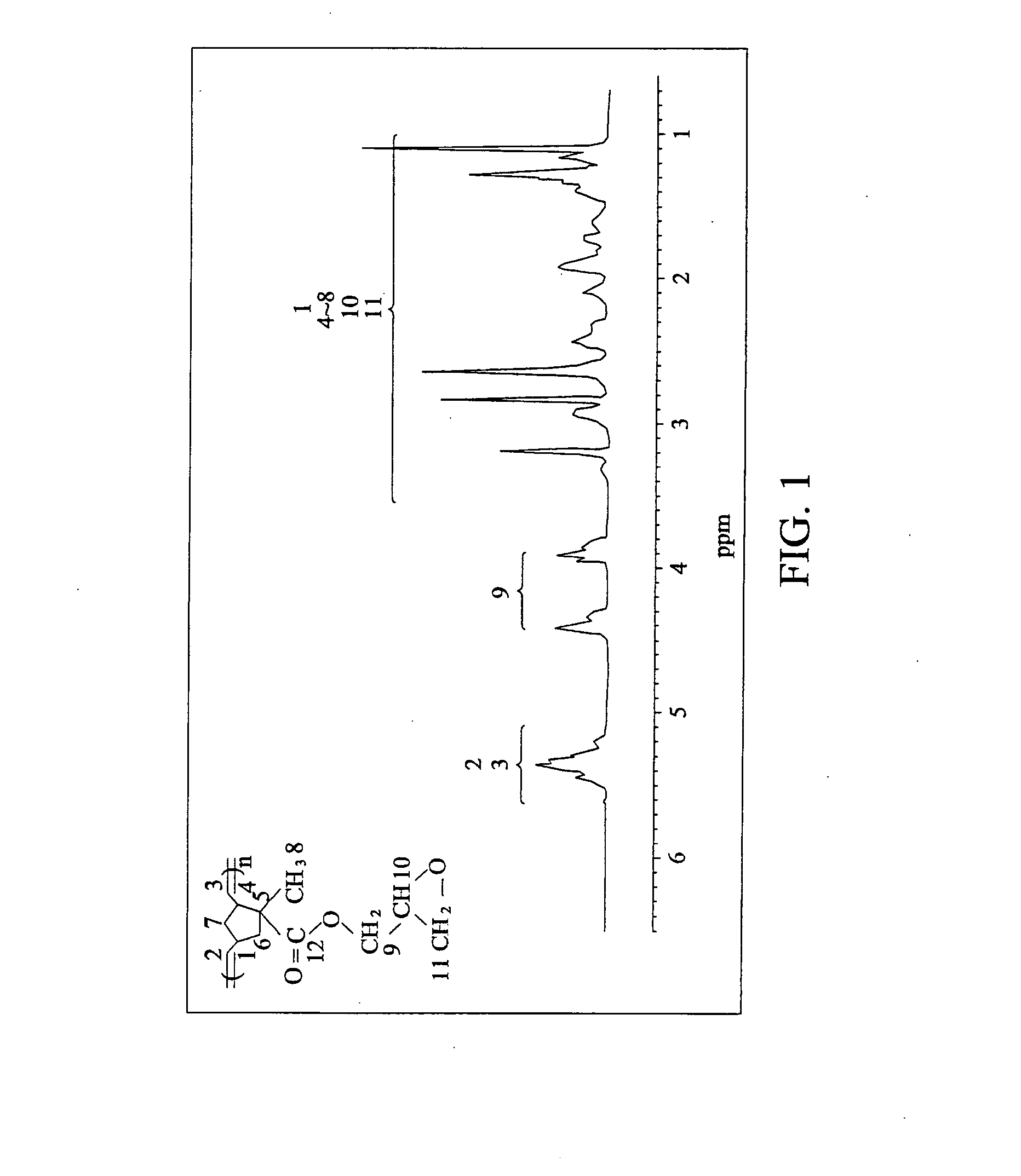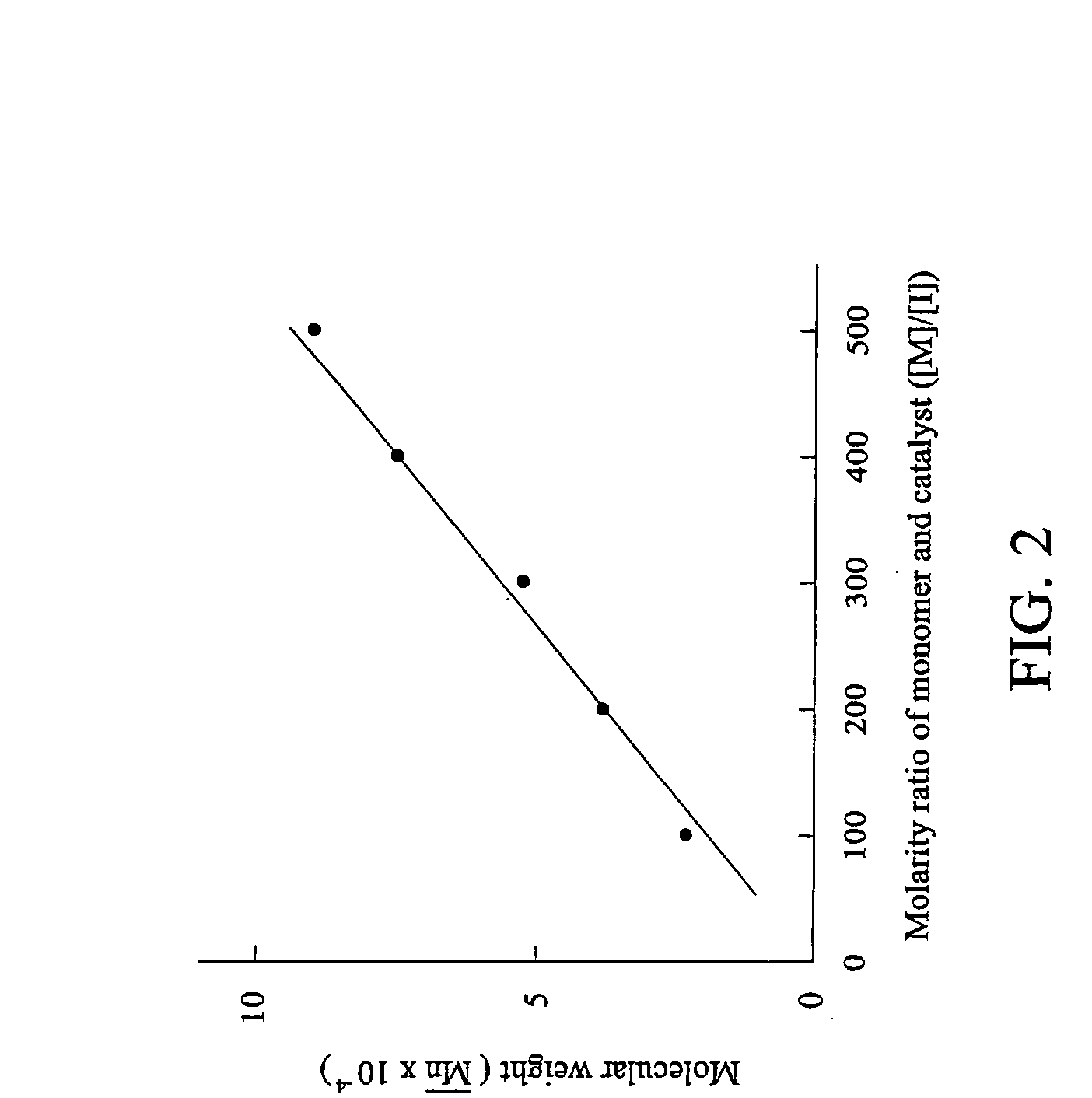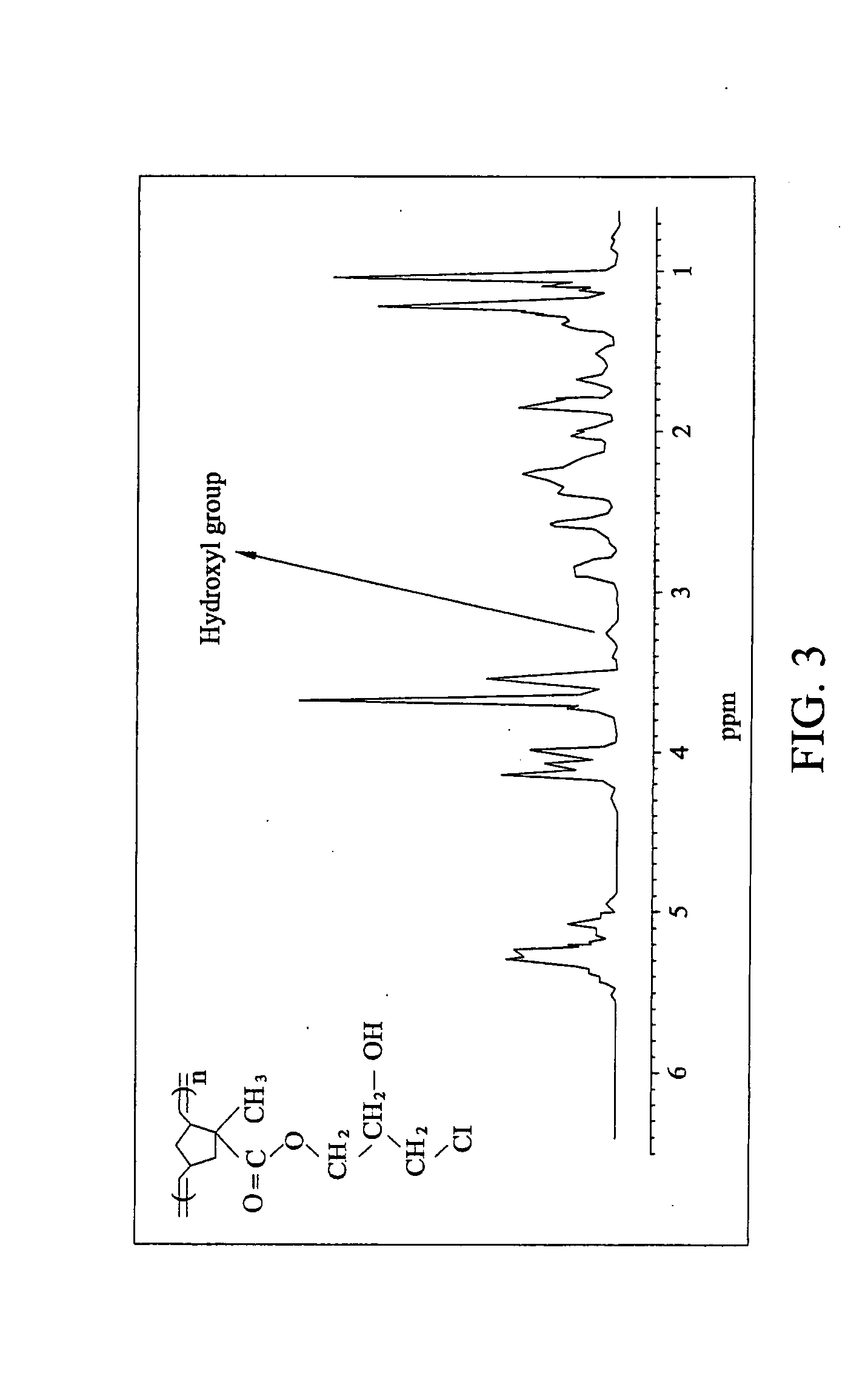Norbornene monomers with an epoxy group and polymer material thereof
a technology of epoxy group and monomer, applied in the field of norbornene monomers and polymer materials thereof, can solve the problems of large molecular weight, high polymerization rate of polymerizing polymers, and limited use of metathesis polymerization of monomers with poly functional groups
- Summary
- Abstract
- Description
- Claims
- Application Information
AI Technical Summary
Problems solved by technology
Method used
Image
Examples
example 1
Synthesis of Norbornene Monomer with Side Chains of Epoxy Groups
[0052]Equal molar of NaOH aqueous solution (5%) and NaCl aqueous solution (20%) were used to extract glycidyl methacrylate (GMA). After repeating the above step several times, MgSO4 was added into the filtrate to perform dehydration treatment. After filtrating, the result was subjected to vacuum distillation to obtain pure glycidyl methacrylate (GMA).
[0053]1.5 mmole of cyclopentadiene, 4.5 mmole pure glycidyl methacrylate, and 100 ml of toluene were added into a bottle and the mixture was heated to reflux with stirring at 130° C. for 3 hours. Next, the remaining cyclopentadiene, glycidyl methacrylate, and toluene (solvent) were removed by a rotary evaporator, and the result was subjected to vacuum distillation at 110-115° C. / 4 mmHg, thereby obtaining a pure norbornene monomer with a terminal epoxy group (NBMGE).
[0054]The reaction according to Example 1 is shown in reaction formula (I):
example 2
Synthesis of Norbornene Polymer with Side Chains of Epoxy Groups
[0055]2.5 mmole of NBMGE (obtained from Example 1) was dissolved in 5 ml dichloromethane, and then dehydrated and degassed thrice via freeze-pump-thaw cycling. RuCl2[C21H26N2][CHC6H5]P(C6H11)3 catalyst (2 mg) was dissolved in 1 ml of methylene chloride and argon was subsequently injected into the reactor with a syringe. After completely reacting, 0.1 ml ethyl vinyl ether was added into the bottle to terminate the reaction. The resulting solution was added to 500 ml of methyl alcohol and the mixture was dissolved in 10 ml of methylene chloride and subsequently extracted with 500 methanol three times, thereby obtaining the norbornene monomer with side chains of epoxy groups.
[0056]The glass transition temperature (Tg) of the norbornene polymer was 43° C. which was determined by differential scanning calorimeter (DSC). Meanwhile, an exothermal peak for the glass transition temperature (Tg) of a conventional norbornene polym...
example 3
Method for Modifying the Molecular Weight of the Norbornene Polymer
[0060]Example 3 was performed as Example 2 except for substitution of the molarity ratio of NBMGE and Ru catalyst ([M] / [I]) 500 for 100. The molecular weight of the obtained polymer was measured by gel permeation chromatography (GPC) analysis, as show in FIG. 2. Accordingly, it should be noted that the molecular weight and molecular weight distribution of the polymer with side chains of epoxy groups can be modified by adjusting the molarity ratio of the norbornene compound and the catalyst.
PUM
| Property | Measurement | Unit |
|---|---|---|
| temperature | aaaaa | aaaaa |
| temperature | aaaaa | aaaaa |
| molecular weight distribution | aaaaa | aaaaa |
Abstract
Description
Claims
Application Information
 Login to View More
Login to View More - R&D
- Intellectual Property
- Life Sciences
- Materials
- Tech Scout
- Unparalleled Data Quality
- Higher Quality Content
- 60% Fewer Hallucinations
Browse by: Latest US Patents, China's latest patents, Technical Efficacy Thesaurus, Application Domain, Technology Topic, Popular Technical Reports.
© 2025 PatSnap. All rights reserved.Legal|Privacy policy|Modern Slavery Act Transparency Statement|Sitemap|About US| Contact US: help@patsnap.com



